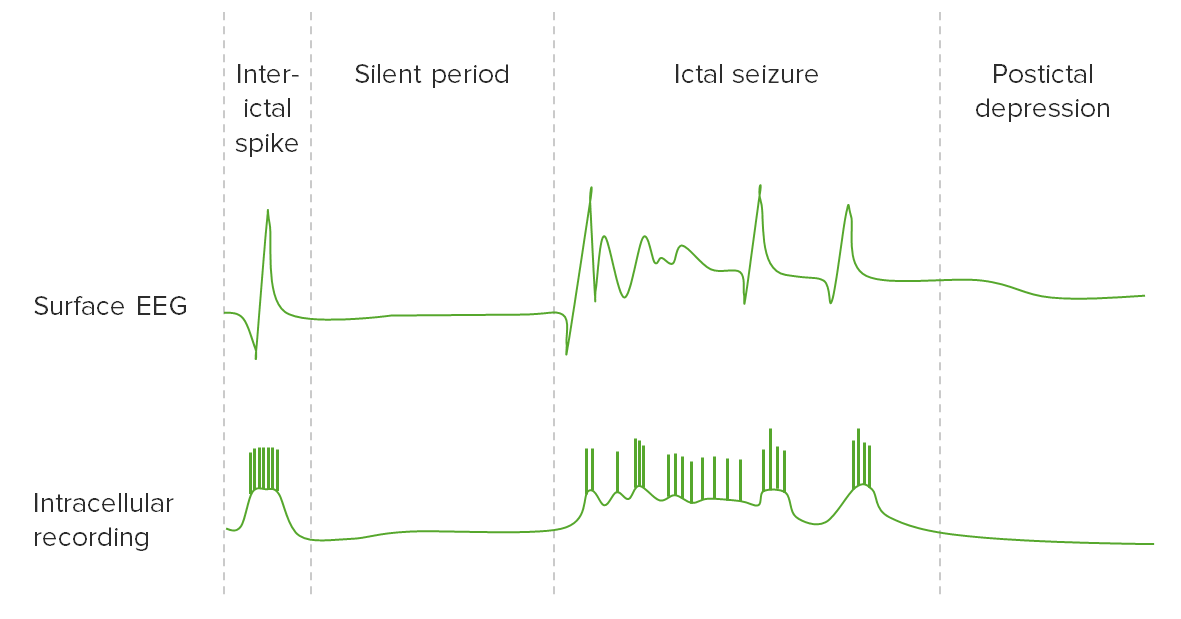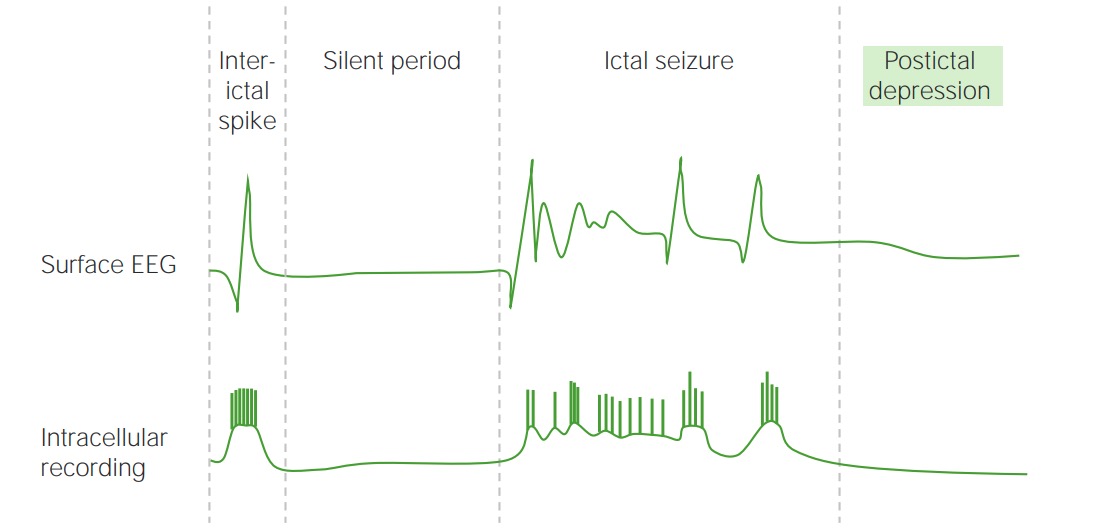Playlist
Show Playlist
Hide Playlist
Case: 57-year-old Man with a History of Epilepsy
-
Slides Seizures Epilepsy Status Epilepticus.pdf
-
Download Lecture Overview
00:01 In this lecture, we're going to talk about status epilepticus or continuous seizure activity. 00:07 So really important topic in neurology. 00:09 It's one of the medical or neurological emergencies that we're going to review. 00:14 Let's start with a case. 00:17 There's a 57-year-old man with a history of focal-onset epilepsy managed on levetiracetam 1000 milligrams twice a day, which is a standard dose. 00:26 He's brought to the emergency department with convulsive seizure activity. 00:30 The patient's wife reports that he stopped taking his medication about four days ago, and she found him on the ground unconscious, and stiff with jerking in the arms and legs bilaterally. 00:42 EMS was called and report that the patient had two three-minute generalized seizures and received lorazepam 2 milligrams two times while en route to the emergency department. 00:54 The patient does not arouse to verbal or tactile stimulation, but eyes weakly open. 01:00 He's unable to follow commands. He groans. 01:03 Neurologic examination is nonfocal. 01:07 So what's the diagnosis? Well, like the other patients we've evaluated with seizures. 01:13 The first key is to look at what happened before the episode or pre-episode. 01:18 And here we don't know. 01:19 The patient was found on the ground unconscious, which is common for many seizure evaluations. 01:25 The second step is to evaluate what happened during the episode during the ictal portion of the episode. 01:31 And this patient had two three-minute generalized seizures. 01:35 And now is unconscious, unable to follow commands, has not returned to baseline. 01:42 The third step is to evaluate what happens after the episode. 01:46 And here again, we have a patient who is not arousing, who has not returned to neurologic baseline. 01:51 And that's really important as we differentiate seizure from possible status epilepticus. 01:57 And then there's a few wildcard aspects here. 02:01 The stiff jerking in the arms and legs bilaterally indicate that this seizure is a tonic clonic seizure, and that will help us in classifying this type of seizures diagnosis. 02:12 So what is the diagnosis? Is this focal onset convulsive seizure? Generalized-onset convulsive seizure? Convulsive status epilepticus, or a primary generalized status epilepticus? We don't like the diagnosis of primary generalized status epilepticus. 02:30 The seizure semiology suggests a focal onset and not a generalized seizure. 02:37 We don't like focal onset convulsive seizure. 02:40 The patient seizure was focal in onset. 02:43 But he's had multiple seizures without return to baseline. 02:47 And this indicates that he's not suffering from seizure and we may be dealing, and look to be dealing with status epilepticus. 02:54 Similarly generalized-onset convulsive seizure the semiology suggests focal onset and this patient suffering from multiple seizures without return to baseline. 03:03 So here the correct answer is convulsive status epilepticus. 03:07 The patients had multiple seizures without to return to baseline.
About the Lecture
The lecture Case: 57-year-old Man with a History of Epilepsy by Roy Strowd, MD is from the course Seizures and Epilepsy.
Included Quiz Questions
Which statement is the most accurate with respect to status epilepticus?
- A patient who experiences recurrent seizures without return to baseline should raise concern for status epilepticus.
- If left untreated, primary generalized seizures will always result in status epilepticus.
- Status epilepticus is benign and most patients have good long-term outcomes regardless of treatment.
- Patients with status epilepticus who are compliant with their medication are at increased risk.
- Patients with a history of status epilepticus do not have an increased risk of recurrence.
Customer reviews
5,0 of 5 stars
| 5 Stars |
|
5 |
| 4 Stars |
|
0 |
| 3 Stars |
|
0 |
| 2 Stars |
|
0 |
| 1 Star |
|
0 |





